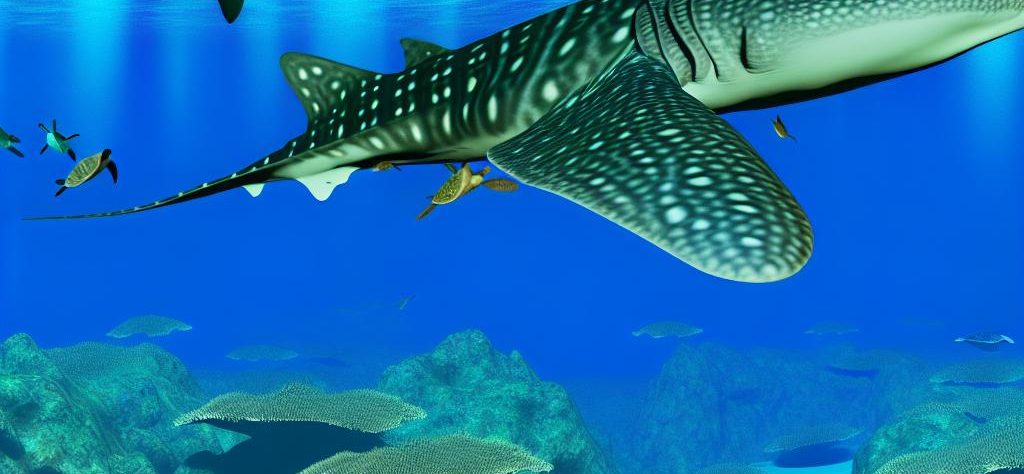Introduction to Night Diving on Wrecks
Night diving on wrecks offers an unforgettable and unique experience for diving enthusiasts. Wrecks, situated in various oceans and seas across the globe, become distinct environments when explored after dark, in contrast to daytime dives. This activity merges the thrill of night diving with the historical fascination of shipwrecks, offering a setting rich with marine life and cloaked in mystery.
The Appeal of Night Diving
In the nighttime, the ocean transforms into an alternate realm. The darkness limits visibility to the area lit by a diver’s torch, creating a sense of adventure. Night diving provides a chance to observe nocturnal marine creatures that are less active during daylight. These include species like octopuses, cuttlefish, and different crustaceans. Additionally, the decrease in daytime operations and boat traffic results in a more tranquil experience, allowing divers to deeply connect with their surroundings.
Historical and Biological Significance of Wrecks
Wrecks narrate human history and maritime exploration, offering divers an insight into the past. Over time, many wrecks evolve into artificial reefs, attracting various marine species. Coral and sponges often colonize these wrecks, creating habitats for numerous species of fish and invertebrates. This natural development enhances a wreck’s appeal as a dive site, offering a rich tapestry of biodiversity to explore.
Safety Considerations for Night Wreck Diving
Safety is a prime concern when engaging in night dives, particularly on wrecks. Divers need to be well-prepared with suitable lighting and signaling devices. A main torch coupled with a backup is essential for navigating the dark environment. Familiarity with the wreck and its layout before night diving is of utmost importance. Many diving professionals recommend a preliminary daytime dive on the site before attempting a nighttime dive to ensure it is both safe and enjoyable.
Dive Training and Preparation
For individuals keen on night diving on wrecks, acquiring specialized training is advisable. Courses encompassing night diving techniques, navigation, and understanding nocturnal marine life prove beneficial. Moreover, obtaining certification in wreck diving is advantageous for learning how to navigate around and within wrecks safely. Proper training and preparation equip divers with the necessary skills to safely enjoy this extraordinary underwater venture.
For further information on certification and training courses, PADI or SSI can be consulted to locate local dive centers offering relevant programs.
Delving Deeper into the Night Diving Experience
Beyond the thrill of the dive, the psychological and sensory changes divers experience during night dives add to the appeal. The limited light and resulting focus contribute to a unique underwater experience. This focus guides attention to small details of marine life that often go unnoticed during the day. The underwater world feels intimate and exclusive; a diver’s torch unveils secrets lurking within the shadows of the vast ocean.
Marine Life and Their Nocturnal Behavior
The ocean at night unveils a side of marine life invisible during daylight hours. Many species emerge to hunt, reproduce, or play, showcasing behaviors otherwise concealed. Observing these creatures in their natural, nocturnal states provides invaluable insights into the underwater ecosystem. Understanding these behaviors enhances a diver’s appreciation of oceanic life, highlighting the intricate connections within marine biodiversity.
Enhancing the Diver’s Skills
Night diving requires refinement of diving skills. Navigating in the dark necessitates improved spatial awareness and communication. Expertise with dive equipment becomes crucial, as minor equipment issues can become significant hurdles in the absence of daylight. Navigational skills need to be sharp, as divers rely heavily on their compass and lights to orient themselves and locate known reference points on the wreck.
The Intrigue of Underwater Archaeology
For those fascinated by history, night diving on wrecks might appeal due to its semblance to underwater archaeology. Partnering the thrill of exploration with historical discoveries, divers often feel like explorers from a bygone era. This adventure enables them to visualize and almost relive stories from the past, fostering a deeper understanding of maritime history.
Challenges Inherent in Night Wreck Diving
Despite its allure, night wreck diving is not without challenges. Visibility constraints make it harder to see hazards and obstacles. Divers need heightened awareness and must exercise increased caution. Strong currents or tides pose additional hazards, which can complicate navigation and potentially disorientate divers.
Technical Considerations and Equipment
Technical proficiency is vital for night wreck diving. Adequate equipment, including a reliable torch, is essential. Divers should carry two lights: a primary and a backup to safeguard against equipment failure. A dive computer helps track time and depth, ensuring the dive remains within safe limits. Additionally, using glow sticks for marking entry and exit points increases safety.
Environmental and Ethical Responsibility
With all the enjoyment night diving offers, there’s a responsibility to minimize environmental impact. Divers must avoid disturbing marine life or damaging the wreck, ensuring a sustainable diving practice. Adopting the principle of ‘leave no trace’ is crucial, enabling future divers to appreciate the site’s beauty and history.
Through expanding skills, understanding marine behavior, and adhering to responsible diving practices, night diving on wrecks provides an enriching adventure for seasoned divers.

